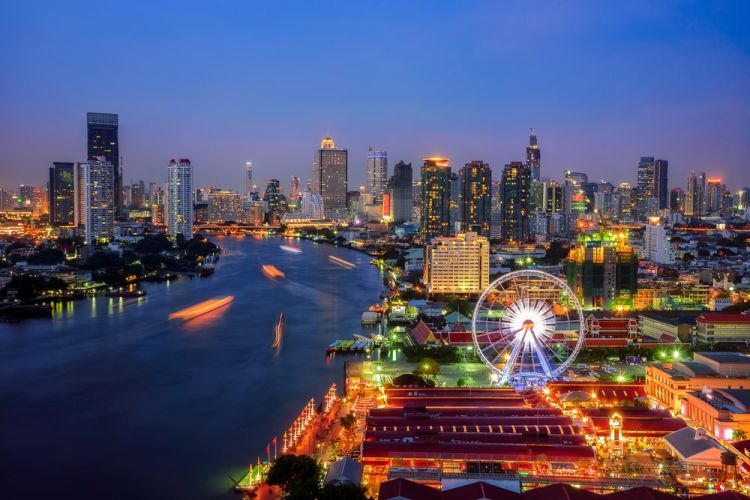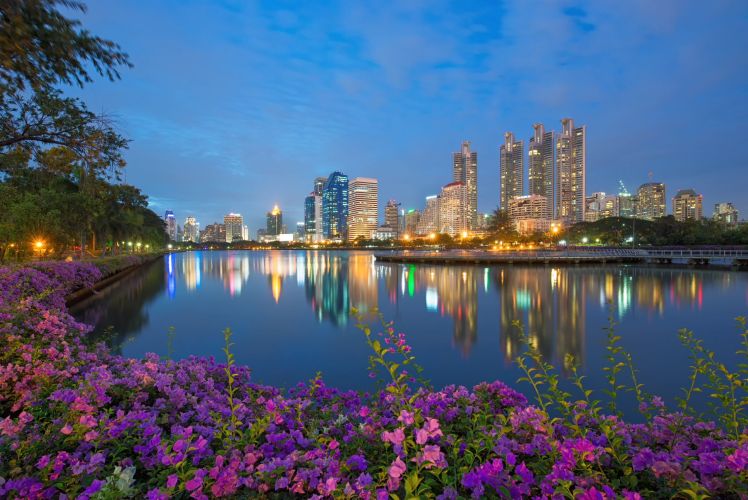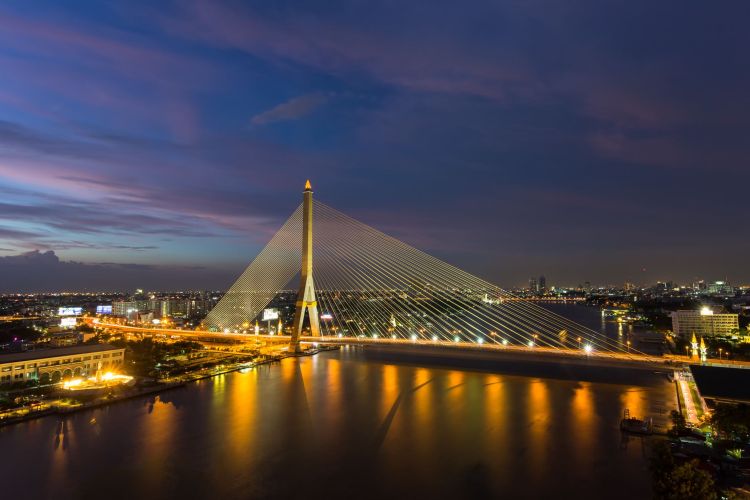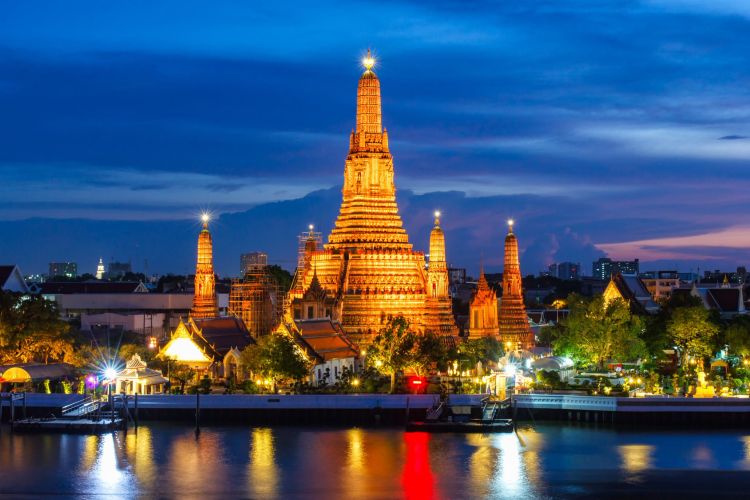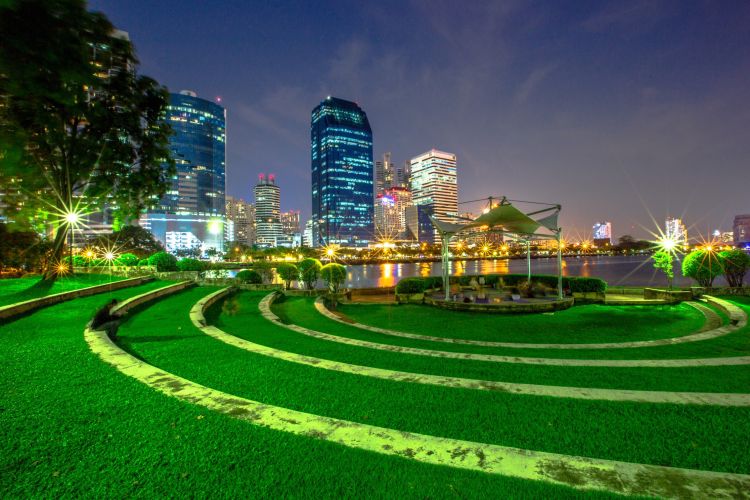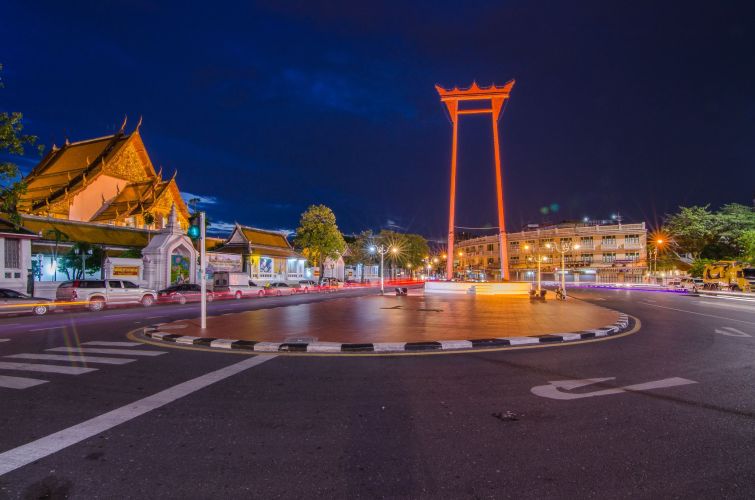Netflix’s Midnight Asia: Eat · Dance · Dream docuseries presents the fascinating stories and occupations of the nightlife people in various Asian cities. In addition to learning about the night scenes in these cities, the series also introduces viewers to the vibrant atmospheres and beautiful sights in these cities that never sleep.
To experience Bangkok’s beauty from a new perspective, you should find time to explore these places.
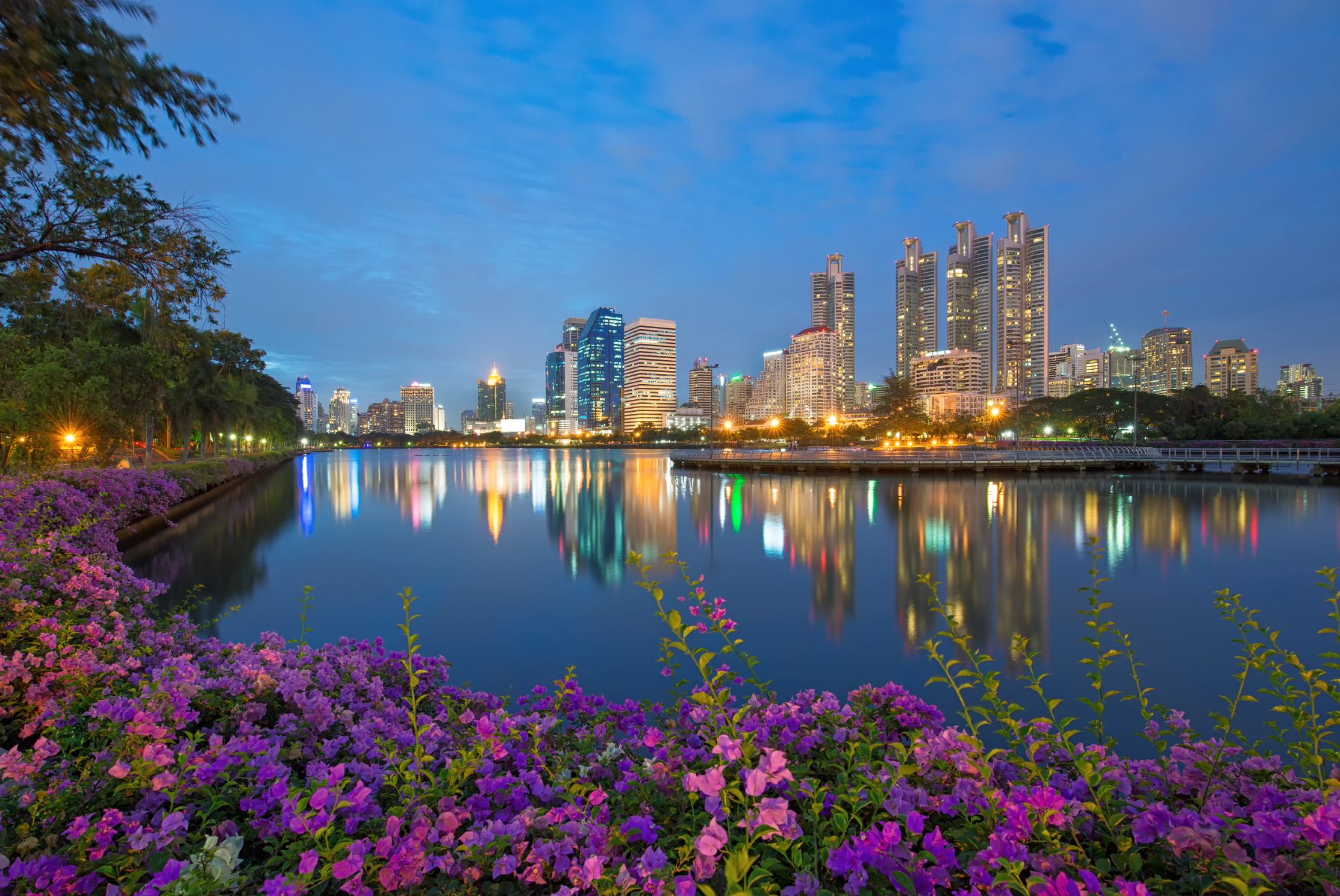
Built to connect the Thonburi side with the Phra Nakhon side of Bangkok, the Rama VIII Bridge was a royal project of King Rama IX. It is the fifth-longest asymmetrical cable-stayed bridge in the world, where golden-yellow cables glisten brightly under the lights at night. Under the bridge on the Thonburi side is the location of Rama VIII Park, where people gather to relax along the river. It’s a beautiful and relaxing spot with a growing reputation among night owls and photographers.
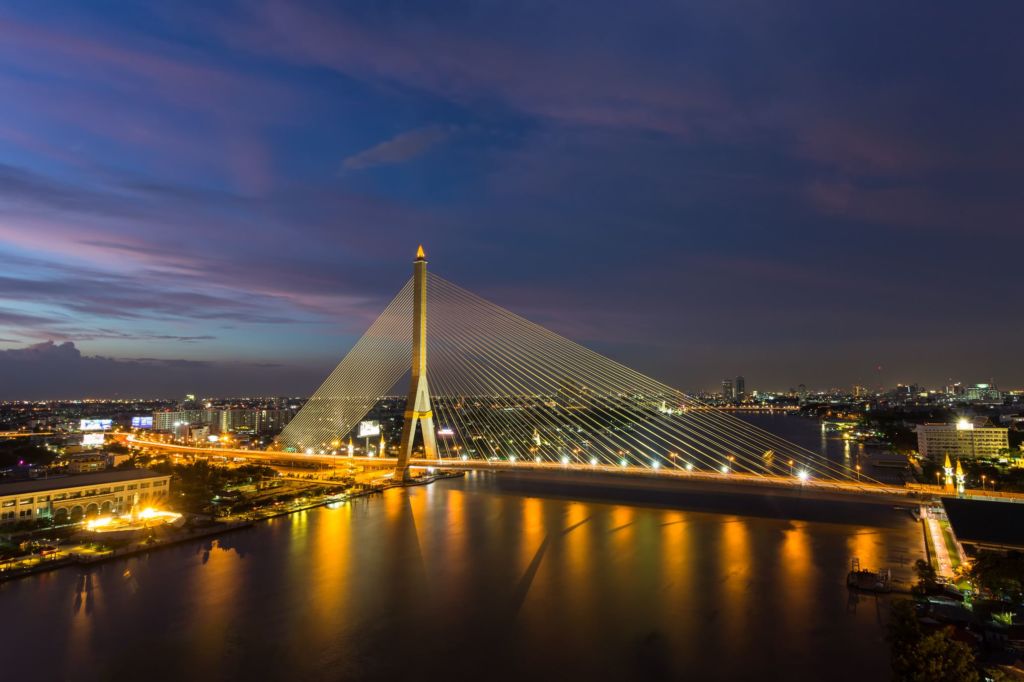

Better known to Thais as Wat Arun or Wat Chaeng, this ancient temple was built during the Ayutthaya period. The distinctive stupa (prang) exudes a unique charm. The white stupa is adorned with glazed tiles, Benjarong crockery, and shells that shimmer in the sunlight during the daytime. At dusk, Wat Arun’s illuminated stupa is reflected into the Chao Phraya River to create a stunningly beautiful and eminently photogenic sight, either from the river or the opposite bank. To capture your own impressions of this amazing sight, it’s better to take photos from a park area near Tha Tian on the opposite side of the river. The sight will be even more beautiful and spectacular during celebrations when fireworks light up the night sky behind the stupa in flashes of color.
Built-in honor of Her Majesty Queen Sirikit, Benchakitti Park in the heart of Bangkok is a large recreational area with facilities such as a playground, running track, and bicycle lane, making it one of the most important gathering points for Bangkokians. In addition to offering enough green space for everyone, Benchakitti Park also has a famous photo corner that overlooks both the water and the high-rise buildings of downtown Bangkok. As the buildings gradually turn on their lights after sunset, they reveal the illuminated charm of the big city at night.
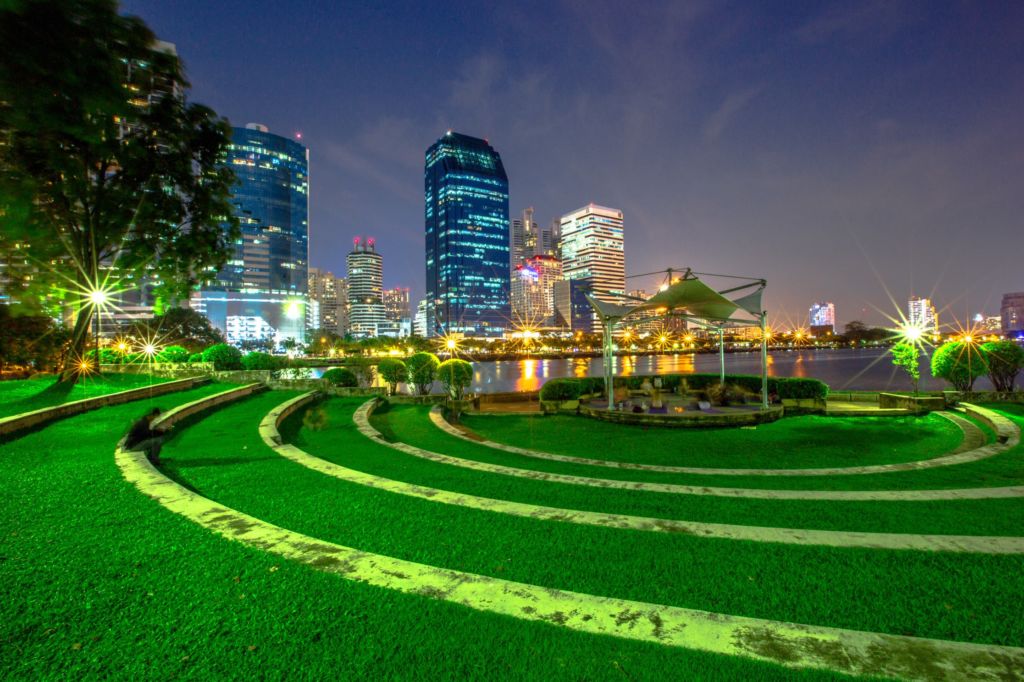
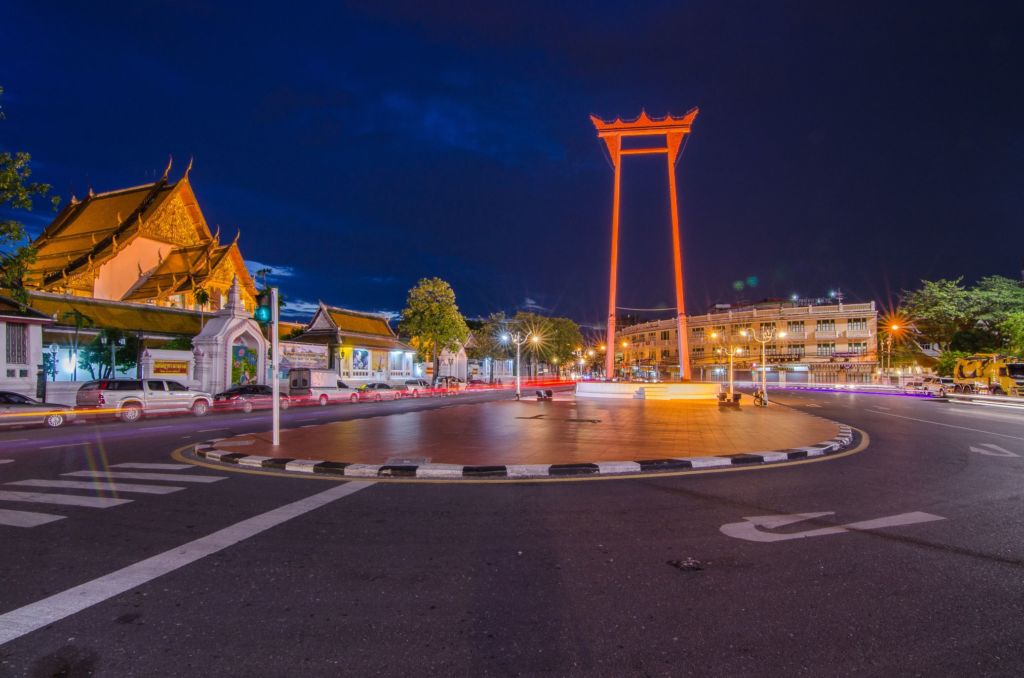
In the past, the Giant Swing was the center of Bangkok, which was also known as the “navel of the city.” Built in the early days of the Rattanakosin era, it was used in the Brahmin-Hinduism royal swing ceremony. Standing 21.15 meters high, the swing’s large red wooden pillars make it stand out both during the day and at night. However, the lights from the old buildings and surrounding temples give the swing’s red pillars an almost ethereal beauty at night, a unique feature of Bangkok that makes for amazing photographs.
Rama VIII Bridge: Take the MRT train to Sanam Chai Station. From there, take bus no.3 or no.9 from in front of Museum Siam and get off the bus at the Phra Nakhon District Office, or take bus no.123, 203, air-conditioned bus no.28, bus number 64, or air-conditioned bus no.68.
Wat Arun: Take the Chao Phraya Express boat to Wat Arun boat station or take the BTS train to Saphan Taksin station and then take the Chao Phraya Express boat from Sathorn Pier to Wat Arun.
Benchakitti Park: Take the BTS train to Asoke Station or the MRT to Sukhumvit Station or Queen Sirikit National Convention Center and walk for 400 meters.
The Giant Swing: Take the MRT to Sam Yot Station and exit Gate 3. Continue walking about 350 meters to the Giant Swing. Alternately, take bus no.12, 30, 32, air-conditioned bus no.3 and 556.

